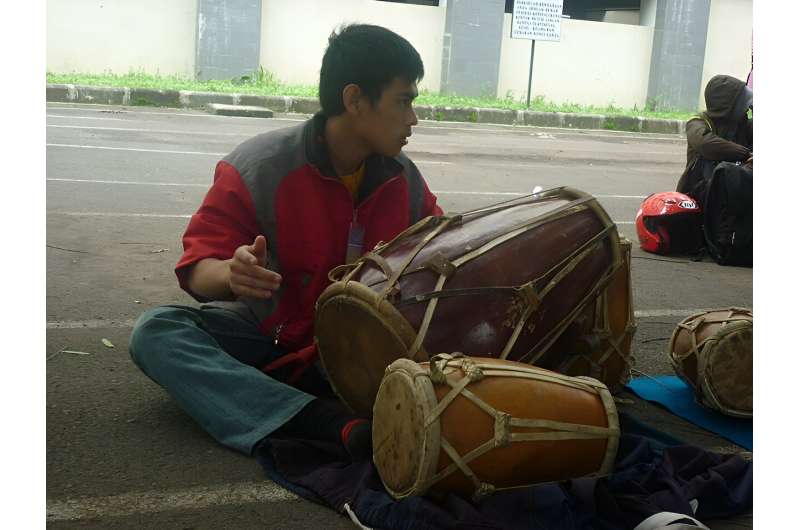This article has been reviewed according to Science X's editorial process and policies. Editors have highlighted the following attributes while ensuring the content's credibility:
fact-checked
trusted source
proofread
Relationship between tradition and technology in Javanese music
A study published in the International Journal of Arts and Technology has looked at the relationship between traditional Javanese music and the introduction of technology and western instrumentation into this genre.
The work undertaken by Aris Setiawan of the Faculty of Performing Arts at the Indonesia Institute of the Arts in Surakarta, Indonesia, focuses on the integration of advancements in music technology within the context of gamelan music. The research offers insights into the opportunities and challenges offered by this novel fusion in the context of tradition and preservation and innovation in Javanese musical heritage.
Setiawan explains that central to his study is the emergence of campursari, this is the emerging musical genre that blends traditional Javanese gamelan instruments with Western counterparts. The emergence of campursari has been embraced by many music fans and labeled garbage by those worried about a loss of cultural authenticity and the preservation of traditional music practices in Indonesia.
Raging debates of a similar sort have been experienced in other parts of the world where modern instruments and playing have clashed with the classical. Purists commonly eschew the fusion, but others embrace it and find the styles and sounds that emerge to be engaging, challenging, and above all else, enjoyable.
Campursari's incorporation of Western instruments has raised questions about tonal clashes and the impact on the authenticity of gamelan music. However, beyond aesthetic considerations, Setiawan's work explores the broader implications of technology's role in cultural preservation. He has used a phenomenological approach to investigate the individual and group response to the integration of technology into gamelan music development. A particular focus was on the modern multi-pad percussion technology and how it sits with traditional gamelan instruments, such as the kendang.
Setiawan suggests that technology, particularly the multi-pad percussion device, can complement traditional instruments like the kendang, known for its complexity. The fusion might allow many more people to enjoy creating music without extensive training. Such a notion does indeed move away from the classical or traditional ethos, but it will not detract from the approach of those who wish to continue in the classical tradition. Just as Mozart and Motorhead can sit alongside each other on an esoteric playlist, so too might the multi-pad and the kendang sit together rhythmically in this new musical form.
However, despite the new aesthetic, there remain concerns among some critics and scholars that there could be an erosion of tradition and a loss of cultural practices associated with traditional music performance. A balanced approach to allow the integration of technology into traditional music education is needed. Ultimately, the goal will be to preserve the rich tradition of gamelan music while allowing musical innovators to bang their own drum and perhaps blow their own trumpet when they do so.
More information: Aris Setiawan, Gamelan, technology, and controversy, International Journal of Arts and Technology (2024). DOI: 10.1504/IJART.2024.137304
Provided by Inderscience






















